IJN Akagi (1925)
 Japan, 1925. Fleet Aircraft Carrier
Japan, 1925. Fleet Aircraft Carrier
WW2 IJN Aircraft Carriers:
Hōshō | Akagi | Kaga | Ryūjō | Sōryū | Hiryū | Shōkaku class | Zuihō class | Ryūhō | Hiyo class | Chitose class | Mizuho class* | Taihō | Shinano | Unryū class | Taiyo class | Kaiyo | Shinyo | Ibuki |The Akagi, first IJN fleet aircraft carrier: IJN Akagi was the second IJN carrier to enter service, converted, as her sister ship Kaga later, on a cancelled capital from “8-8 plan” due to the Washington treaty limitations. With Kaga, the Zuikaku class, IJN Hiryu and IJN Soryu, she was part of the famous Kido Butai, probably the world’s best, aircraft carrier unit worldwide in 1941. Famous for her participation in the Pearl harbour attack in December 1941, IJN Kaga already had a long career under her belt, notably in China, and its pilots were among the world’s best trained, led by 15 years veterans. IJN Akagi, like the US Lexington class, was converted from a battlecruiser and arguably more successful than Kaga, from a battleship. She was fast and could carry 91 planes, but her career was relatively short, as she sank in the battle of Midway in June 1942, crippling the Kido Butai.
The Amagi class

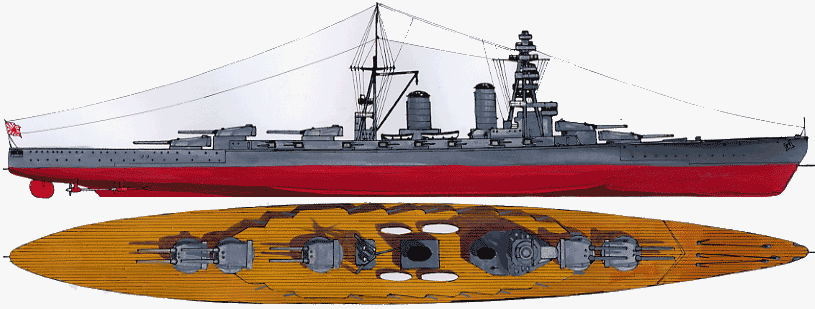
A sketch of the Amagi and author’s rendition
Design
IJN Akagi was originally part of a four-ships class, the Amagi class battlecruisers (Amagi, Kaga, Atago, takao). With a displacement almost double of the Kongo class, their predecessors, these ships were the fulcrum of the 8-8 plan, battlecruisers equivalent of the Nagato class battleship with an extra 410 mm turret. With their better protection they already anticipated the next generation of fast battleships of the interwar. The plan approved in 1917 funded the two first battlecruisers of the Amagi class, expanded to four four by late 1917 and in 1918 the addition of two more battleships for the famous ‘8-8’ plan, taking an enormous financial strain on Japan, spending about a third of its national budget on the Navy alone. Politicians opposed the military and decided to agree to the Washington treaty limitation in 1922. This sealed the fate of the Amagi class ships already in construction, despite the fact they were nearing completion at that time, just like the Tosa class battleships.
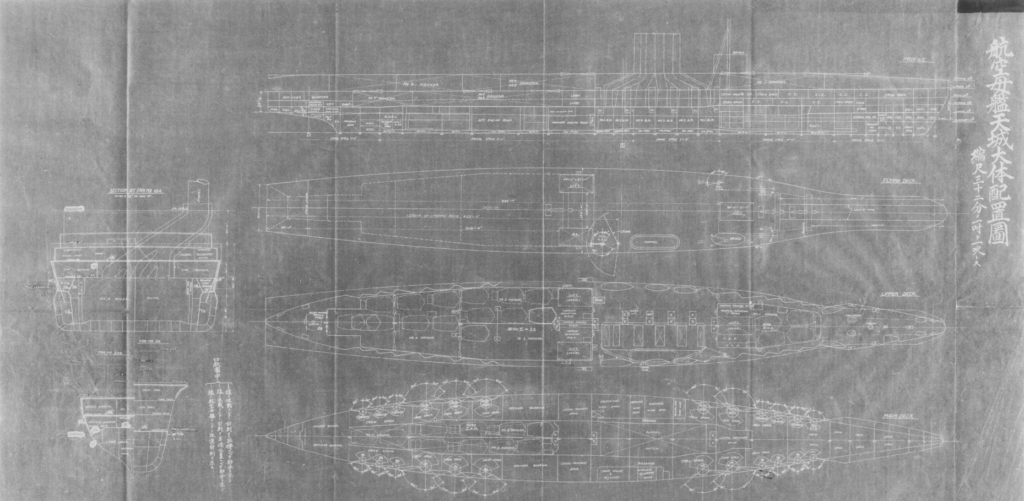
Amagi class conversion blueprint
The Amagi class were with the USN Lexington class the largest military warships in the world at that time. Displacing as standard 41,200 tonnes, and an estimated 47,000 tonnes fully laden, these 252 m long ships, 31 m wide, armed with ten 16-in guns were also capable of 30 knots thanks to the unprecedented output of 130,000 shp. This superlative combination of speed, protection and firepower imposed drastically larger dimensions and a soaring cost, which was contested at the diet (parliament) in 1918 and 1919. Nevertheless, the Navy had its naval plan approved and orders passed to Kure Naval Arsenal (Akagi), Yokosuka Naval Arsenal (Amagi), which were laid down in December 1920, IJN Akagi ten days prior Amagi. She would also be the first launched, with projected completion dates, for the first pair of December and November 1923 respectively. IJN Atago followed, laid down in Kobe, Kawasaki shipyard on 22 November 1921. Projection date for completion was to be December 1924. Takao was laid down at Mitsubishi shipyard (Nagasaki) on 19 December 1921, projected completion date was December 1924. They were all named after mountains and Takao initially was “Ashitaka” after Mount Ashitaka.
Cancellation and fate
The Washington Naval Treaty was seen by Japanese politicians opposing the military faction a way to recover budgetary sanity. They signed the treaty in February 1922, which greatly reduced the tonnage allowed for capital ships for Japan, assorted by a moratorium on new constructions. As the result, and to the dismay of the navy faction, and satisfaction of the Army, which had no limitations of her own, the new capital ships in construction were all cancelled, the two Tosa class, and the four battlecruisers of the Amagi class. This was only accepted because the United States and Great Britain did the same sacrifices, their Lexington and G3 class, respectively, with the sole derogation of the Nelson class. The treaty however had a provision allowing to use their hulls for conversion into aircraft carriers. Indeed the construction cost was such, that it was a necessary concession, welcome for the parliament that financed these, and the Navy that can at least have something left of these program.
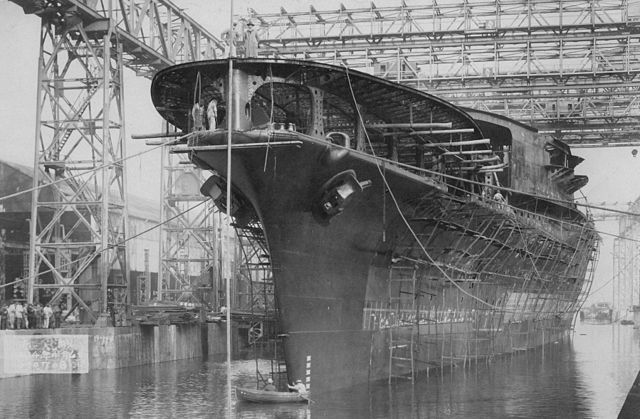
The launch of Akagi in 1925. Completion will took two more years
There was a twist though: Whatever the hull, these new carriers had to be kept under 27,000-ton in standard displacement. The Amagi class were rated at 47,000 t full loaded in battlecruiser configuration and the obvious was to modify the design to scrap all the armour and play with the rest to keep the final displacement as low as possible. Discussions between the admiralty and naval architecture bureau of the IJN However started right away, at its head, legendary ship designer Yuzuru Hiraga.
The admiralty kept an eye on the solutions found in the USA, the most probably adversary in the Pacific, with the solutions found for the equally massive Lexington class. The British, which created carriers based on 1916 light battlecruisers had not that problem.
In the US, an exception was crafted by US Assistant Secretary of the Navy, Theodore Roosevelt, Jr. His idea was to add to the treaty, available for the five signatories an option to convert up two capital ships under construction, up to 33,000-ton aircraft carriers. It was avidly signed by all, and Japan chose Amagi and Akagi, the nearest to completion, for conversion. Their massive guns were turned over to the Imperial Japanese Army and recycled into coastal artillery, in Tokyo Bay and in Busan (Korea) and Iki Island (Tsushima), while the remainder was placed in reserve and scrapped in 1943.
The great Kanto earthquake
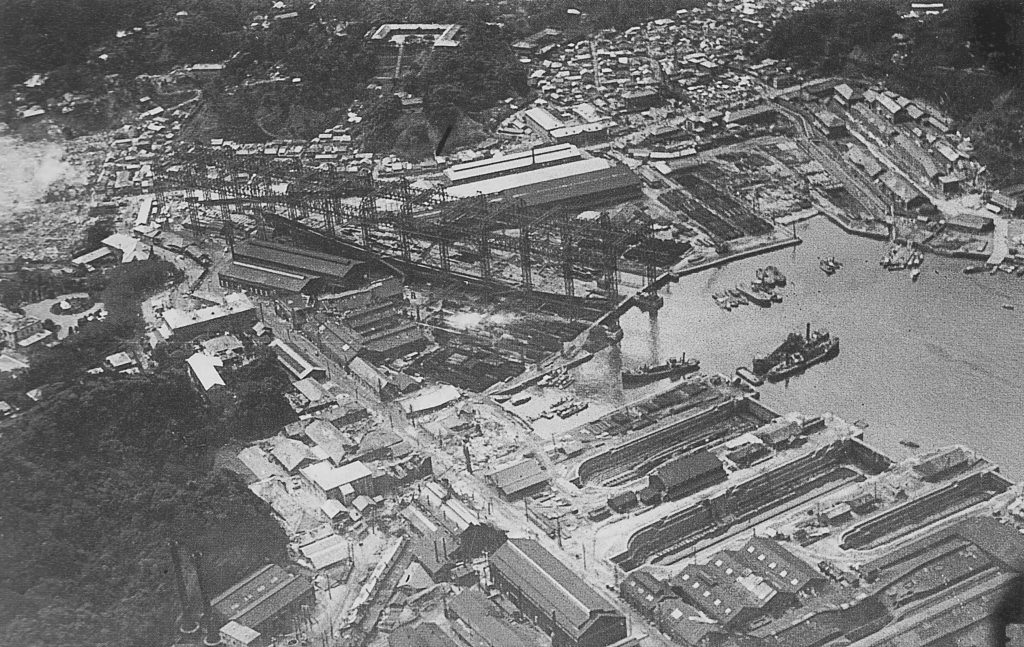
Yokosuka yard after the great Kanto earthkaque, with IJN Amagi damaged in her slipway
In September 1923 however, as the ships were still not launched but converted in their construction form, one of the peril known in Japan but neither in its competitors the US or UK, was a a very unfortunate natural phenomenon: It happened to be the Great Kantō earthquake, in Tokyo. It caused death and destruction at a massive scale and became a national tragedy but also had repercussions on the coastal industrial sites also, notably at the Yokosuka yard. It caused significant stress damage to the hull of Amagi. The structure became too heavily damaged to be usable. The team that investigated it declared it was too compromised to be of any use. At great consternation, the Navy accepted to stop and cancel the conversion work outright. IJN Amagi was later stricken from the navy list and and sold for scrap, starting on 14 April 1924.
IJN Atago and Takao, which construction was not as advanced, were officially cancelled two years later on 31 July 1924 and broken up in their slipways. Still, the navy needed her two fleet carriers, notably to face those in the US, of the Lexington class. There was one option left, although unsatisfactory: The Tosa-class battleship Kaga, of which work had stopped on 5 February 1922. She was reordered to be converted as a carrier, replacing Amagi. Although very different, she was to constitute a “pair” with Akagi and that’s the way she was perceived by naval historians to this day. The major difficulty was to redrawn and adapt the conversion plan to her new hull, not larger, but significantly shorter, at 230 m. All in all, the engineers managed to spare 7,000 tonnes ovee the original design, to fit withing Washington treaty limitations.
Conversion Design of the Akagi
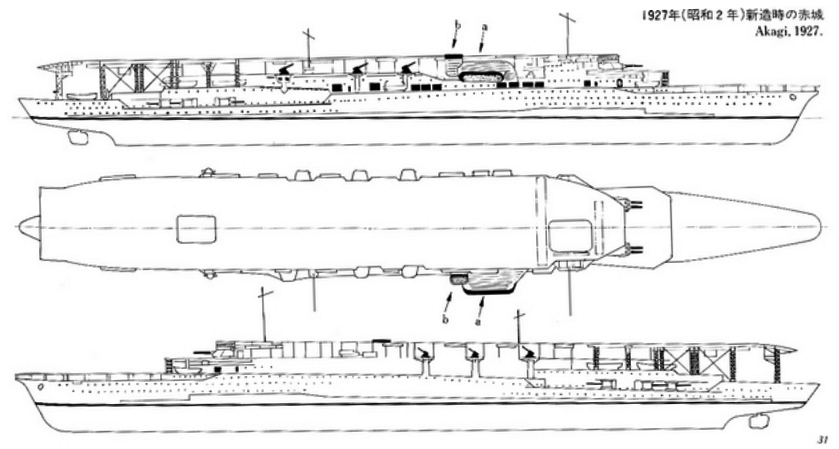
Final design, the Akagi in 1927, after post-trials modifications
The engineer’s task for the conversion was not that simple, even for the Amagi class. Their long hull was an advantage, well suited for a fleet carriers unlike the Hosho, and very comparable to the USN Lexington class.
Hangar and landing decks
IJN Akagi (and Kaga which retook this idea) had something unique and unsurpassed in the history of aircraft carriers: Three superimposed flight decks. The British carriers of the Glorious class had two flight decks at the time, to the Japanese pushed that concept further due to the larger dimensions available. It was also more seductive to be allowed to lauch more planes at once for an attack. It seems there was a convergent evolution launch and recovery cycle flexibility by that time, which was later rationalized later. IJN Akagi had her main flight deck, used mainly for planes landing, 190.2 meters (624 ft 0 in) long for 30.5 meters (100 ft) wide so about the same as her initial “natural beam”. The hull was however much longer than the flight decks, as her middle flight deck build in front of the bridge was just 15 meters (49 ft 3 in) long, enough to launch biplanes strapped on releasing brakes at full throttle, reminiscent of British turret take-off platform at the end of WW1. The lower flight was 55.02 meters (180 ft 6 in) long, allowing heavier planes to comfortably took off. The middle flight deck was mostly used understandably to launch fighters for close defence as they needed not to be loaded much. The evolution of aviation soon condemned this solution. The upper flight deck sloped slightly from amidships toward the bow, but also toward the stern to procure both a slope for faster take-off speeds, and some braking when landing. It was important for the rather underpowered aircraft of the time.
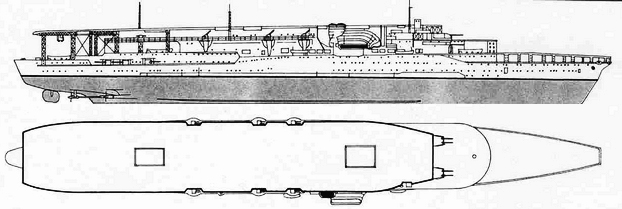
IJN Akagi, 2 view blueprint in 1928
As completed she also had had two main hangar decks, plus a third auxiliary hangar mostly retained as a workshop and to store disassembled spare aircraft. This gave a total capacity of 60 aircraft, wings folded, as shown in the blueprints. The two main hangars served respectively the middle and lower flight decks so that aircraft could take off directly from their respective hangars whereas landing operations took place meanwhile on the main flight deck. The upper and middle hangar had a combined surface of 80,375 square feet (7,467.1 m2) and the smaller, lower one, just a tenth, at 8,515 square feet (791.1 m2). There was a forward aircraft lift, offset to starboard measuring 11.8 by 13 meters (38 ft 9 in × 42 ft 8 in). She had an aft lift, centerline measuring 12.8 by 8.4 meters which serviced the three successive hangar decks.
She had by the time of course no catapult for an arresting gear, derived from the 1918 British longitudinal system used on the HMS Furious. It relied on friction between the hook and cables was largely unsatisfactory. The system was adopted by the Hōshō and so was adopted for Akagi by default of a better alternative. The 1931 reconstruction saw the adoption of a Japanese-designed transverse cable system, divided into six arresting wires and again replaced in 1935 by the improved Kure Model 4 type. The initial design, like any early carriers, eliminated any island superstructure, and the command bridge was located instead below the forward end of the upper flight deck. To fill her onboard aviation, tanks were built to be filled up to 150,000 US gallons (570,000 l) of high-octane fuel.
Powerplant
Her powerplant was not changed much since the reconstruction took advantage of it. She kept her four geared Gihon steam turbines sets fed by 19 water-tube Type B Kampon boilers working at 20 kg/cm2 (1,961 kPa; 284 psi), and same rating of 133,000 shp (99,000 kW). Some of these boilers had a mixed fire, with fuel and coal.
This allowed for a greater top speed as initially planned, from 28.5 knots (52.8 km/h; 32.8 mph) to 32.5 knots -on sea trials, 17 June 1927.- (31.5 knots as designed) thanks to the reduction in armour. Her range was 8,000 nautical miles (15,000 km; 9,200 mi) at 14 knots (26 km/h; 16 mph) allowing for Pacific operations. She carried 3,900 long tons (4,000 t) of fuel oil and 2,100 long tons (2,100 t) of coal. But later modifications were made nevertheless to fit its use to operate aviation.
On Hōshō, hot exhaust gases were vented by swivelling funnels. It cause many issues and in wind-tunnel testings this was shown a real problem with little solutions. But for Akagi and Kaga it was chosen to make the concept evolve and evaluated in real-world conditions. IJN Akagi at first had two funnels on the starboard side as shown in the early drafts, making for a large funnel, not unlike the Lexington. This large forward funnel was angled 30° outwards, facing the sea. A smaller funnel aft also exhausted vertically, but little past the edge of the flight deck. The forward funnel had also a water-cooling system install, thought to to reduce turbulence on the flight deck. In addition to deflect these hot exhaust gases, a foldable cover could be erected to further redirect these exhaust gases in case of severe list, or especially if the mouth of the funnel was lose to the sea. Kaga adopted only adopted such system when rebuilt.
Armour Protection
It was comprehensively reduced to lower the overall displacement (Washington limit) and compensated for the added weight of the hangars. The waterline armored belt was reduced from 254 to 152 mm (10 to 6 in). Also it was lower on the ship than originally designed to deal with torpedoes in priority. The torpedo bulge was for its upper section protected by 102 mm (4 in) of armor. The armored deck was also much reduced, from 96 to 79 mm (3.8 to 3.1 in). All this also improved the ship’s stability. Calculations had been done for topside weight of the double hangar deck, which also dictated the placement of gasoline tanks and fuel tanks.
Armament
Needless to say, if there was any though of an hybrid battleship at some point, it never led to any known draft. The main armament was to be completely eliminated, but not the secondary armament, that could be kept in barbette, or rearranged in turrets. It was revised countless time until the ship was lost in 1942. Many considerations were made about stability, so engineers had to fight the Navy over this question time and again during design revisions. At first, it was thought to keep part of the 16 single 14 cm (5.5 in) guns in barbettes and some of her single 12 cm (4.7 in) AA guns, but the Navy needed the ship to be self-protected, and choose a heavier armament instead, heavy cruiser rate.
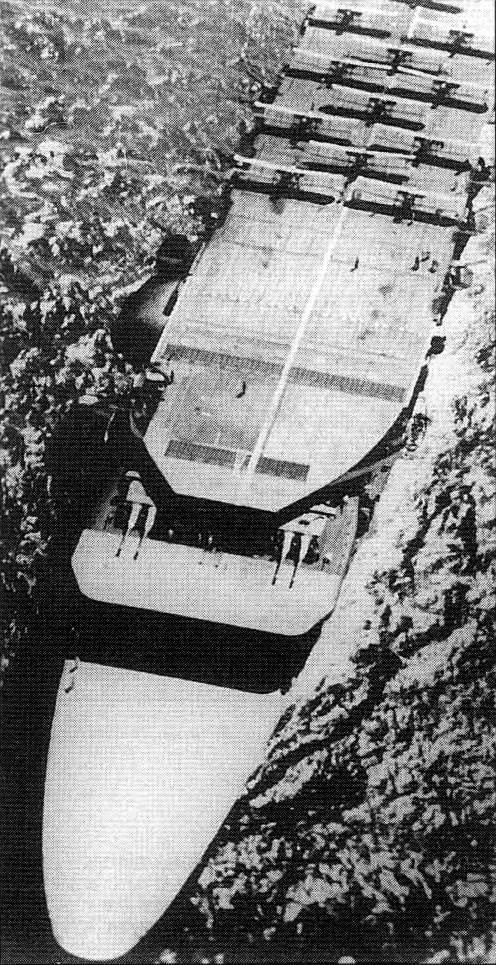
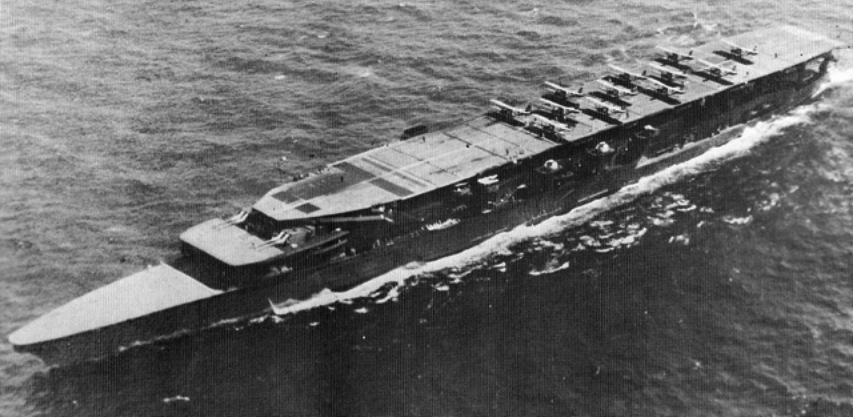
IJN Akagi in 1929 (cc), showing its forward heavy cruiser twin turrets
The main final armament comprised therefore ten 200 mm (8 in) 3rd Year Type No. 1 guns. Six were in casemates aft (modified versions of the original ones) and the remainder was placed in two twin gun turrets on either side of the middle flight deck. This was at the insistence of the Navy, to procure these guns a higher-up position to stay efficient in heavy weather. Overall, five guns per broadside for defensive purposed. The lack of high up fire control systems was a problem for accuracy. Two Type 91s fire control directors were placed on either side of the ship.
These guns fired 3–6 rounds per minute, 110 kg (240 lb) shells at 870 m/s (2,900 ft/s). At max elevation of 25°, maximum range was between 22,600 and 24,000 meters (24,700 and 26,200 yd). The choice of heavy caliber guns was also dictated by the same choice being made by the US admiralty for the Lexingtons, but with four twin turrets over the upper deck, offering a way better arc of fire and better FCS.
The two forward turrets were designed to be capable of 70° elevation, for additional AA fire, but in the end engineers could only made it work in practice only for 55°. Its slow rate of fire combined to a 5° loading angle negated this capability outright anyway. It reflected the way in 1922, naval planners were still unsure how the CVs would operate, as it was still seen as an auxiliary, and the concept of “protective bubble” in a task force was not yet integrated. This defence was only in case she was surprised by enemy cruisers. But she was doomed anyway in that case. Carrier doctrine would later condemned this vision.
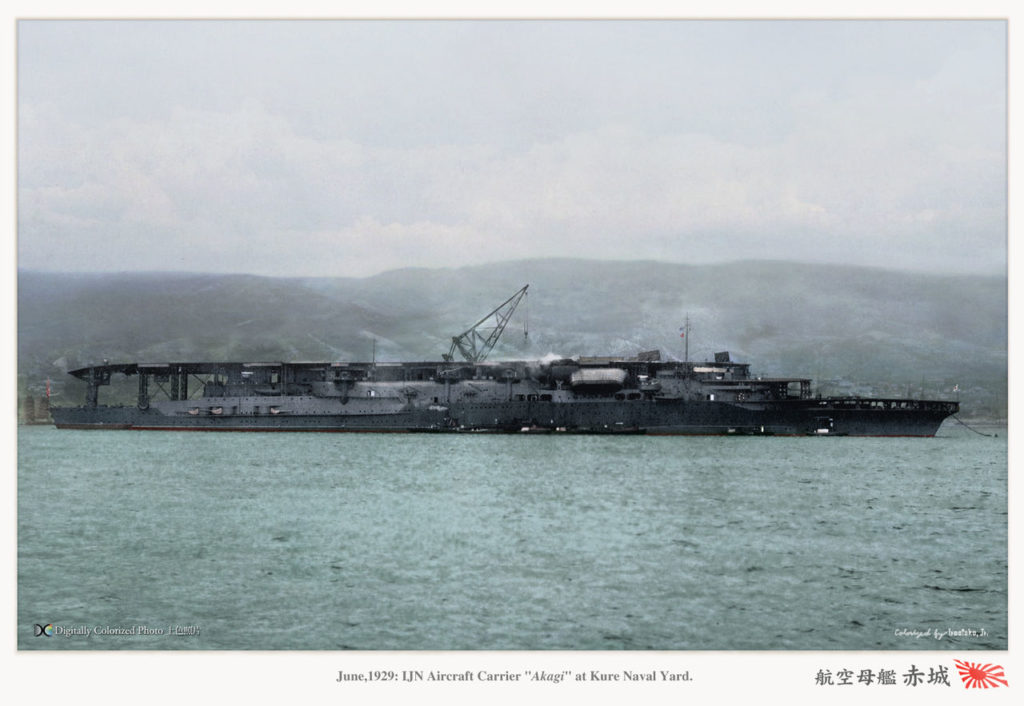
IJN Akagi in 1929, colorized by Irootoko Jr.
Her AA dual purpose armament comprised still the six original 12 cm guns, but the more modern twin 45-caliber 12 cm 10th Year Type guns. They were mounted in sponsons just below funnel level, and could not therefore fire across the flight deck, so in practice reducing the AA fire to search side, with three mounts per side. They fired 20.3-kilogram (45 lb) shells at 825–830 m/s (2,710–2,720 ft/s). At 45° this gave them a range of 16,000 meters (17,000 yd), or at 75° a ceiling of 10,000 meters (11,000 yd). Effective rate was 6–8 rounds per minute, and fuse shells were develop for them along the way. This armament stayed the same without change until the end of their career. Nothing else was carried (lower caliber). Of course, this will change over time.
Aviation complement
Although it changed over time, Akagi’s completion in 1927 allowed her to leapfrog almost three generations of naval aircraft already used on Hosho. As completed, she was provided an air group that reflected the views of the admiralty at the time:
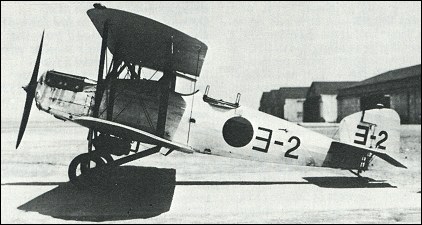
Mitsubishi M2R
-28 Mitsubishi B1M3 torpedo bombers for attack
-16 Nakajima A1N fighters for defence
-16 Mitsubishi 2MR reconnaissance aircraft to proved intel for the fleet.
As tactical exercises took place over time, emphasis was made on bombers, torpedo planes and fighter, less reconnaissance planes, until they were completely eliminated. Instead, long range recce relied on seaplanes and onboard floatplanes of the IJN.

Author’s illustration of the Akagi in 1928
Specifications (1927)
Displacement: 26,900 long tons standard, 34,364 long tons Fully Loaded
Dimensions: 261.21 m (857 ft) x 31 m (101 ft 8 in) x 8.08 m (26 ft 6 in)
Machines: 4 shaft Gihon geared steam turbines, 16 Kampon mixed fired boilers 130,000 shp
Maximum speed 31 knots
Range: 8,000 nm (15,000 km; 9,200 mi) at 14 knots
Armament: 10 x 200 mm (8 in), 6 x 120 mm DP (5 in), 52 aircraft + 25 dismounted
Crew: 1,300
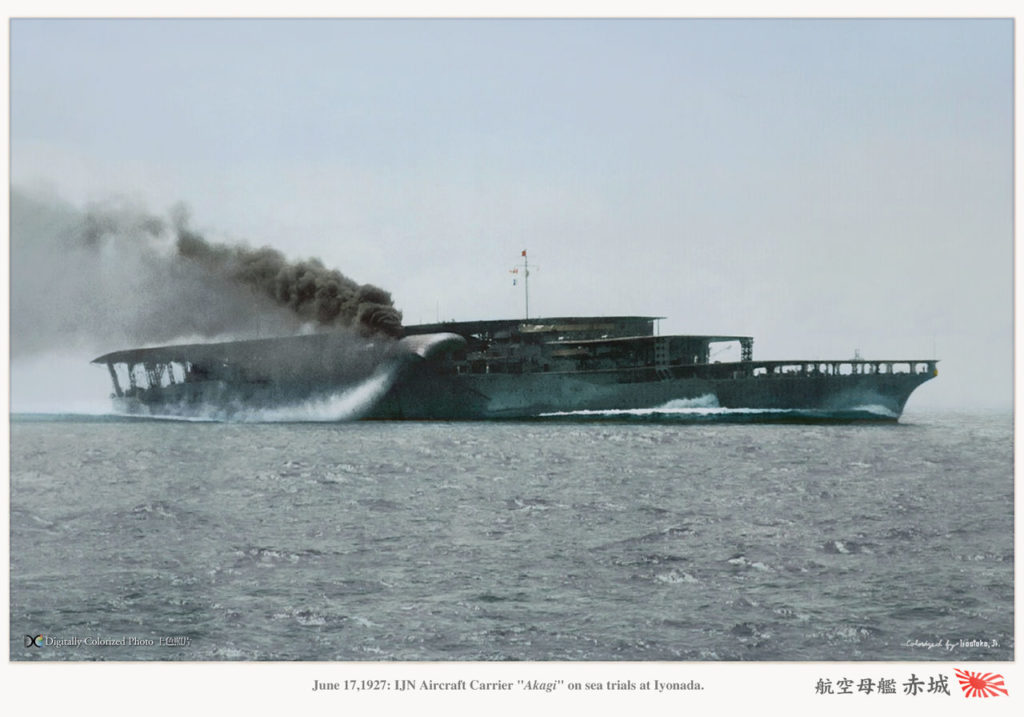
IJN Akagi in 1927, colorized by Irootoko Jr.
Second Reconstruction
After some eight years of service, from 1927, IJN Kaga was sent to the drydock at Sasebo for reconstruction, in light of the experience gained with carrier operations. It was comprehsive, lasting from November 1935 to August 1938, so nearly four years in all. This modernization yet was still less extensive than for IJN Kaga, but was delayed due to budget cuts after the Great 1929 Depression.
New Hangars, elevators, arresting system and flight deck
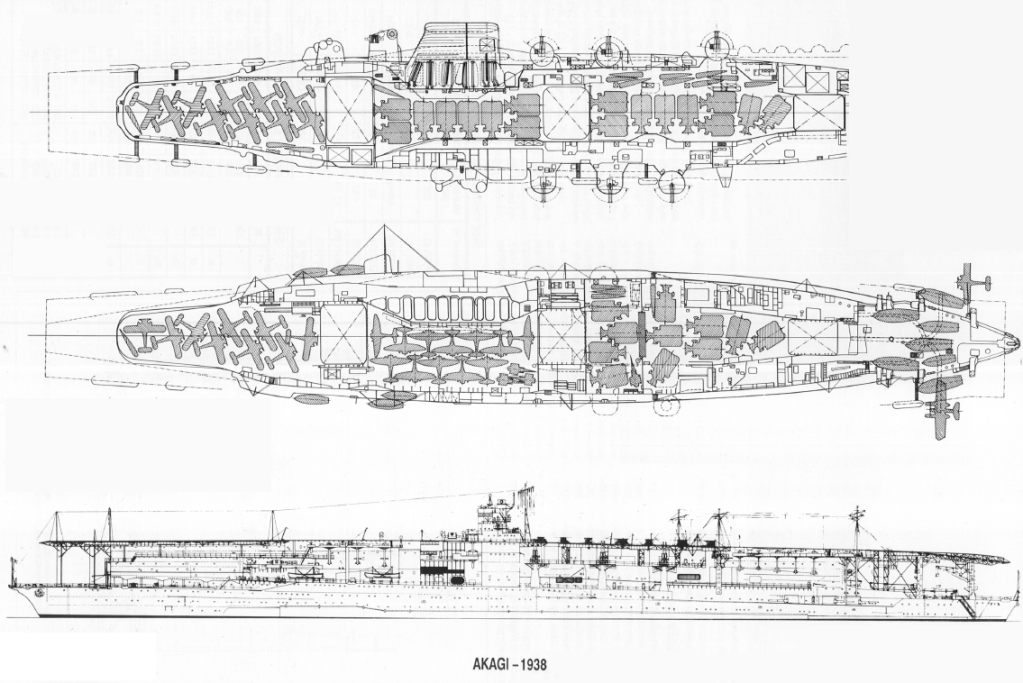
Internal arrangement of IJN Akagi after reconstruction
Her three flight decks had shown they were impractical, and especially in light to the new aircraft coming into service, both larger and heavier. the middle and lower flight decks were eliminated altogether for a single reinforced main deck, and the space below was enclose, creating two large and fully enclosed hangar decks, extended from stern to stem. Total space reached 93,000 square feet (8,600 m2) but the lower hangar retained her former height. The upper flight deck was also extended to the bow, giving more distance to heavier planes, and increasing the ship’s overall length to 249.17 meters (817 ft 6 in). This flight deck was also still inclined slightly fore and aft.
The aircraft capacity was improved, reaching 86 planes, including 61 operational and ready, plus 25 in storage below, dismounted. In addition o the two elevators mostly unchanged, a third one was added amidships, which was 11.8 by 13 meters large (38 ft 9 in × 42 ft 8 in). The initial arrester gear was replaced by a Japanese Type 1 hydraulic set of 9 wires. For better command and control, but yet still to avoid much interference on the flight deck, it was decided to erect an island superstructure on the port side. By that time, only Hiryū had a similar system. The port side was chosen experimentally to be tested in flight operations, away from the ship’s exhaust outlets.
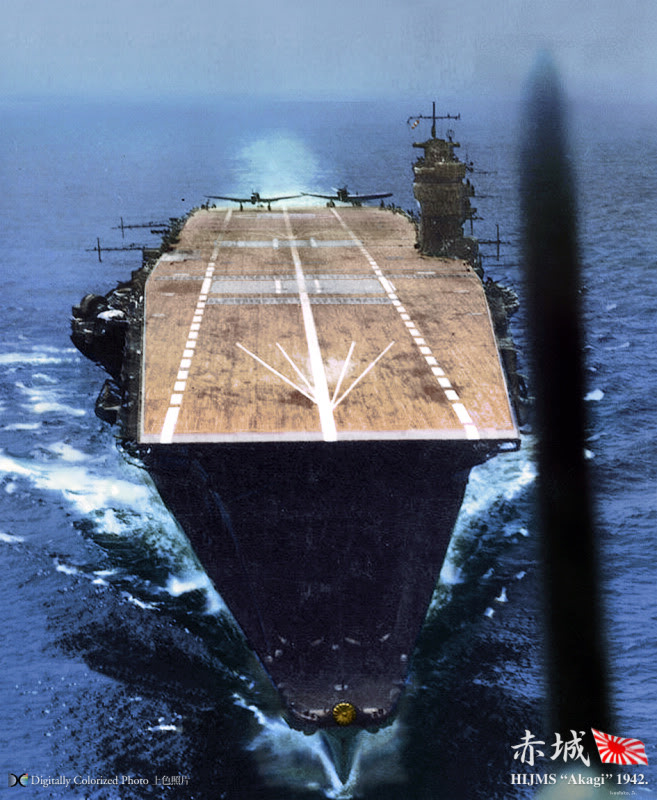
IJN Akagi in 1942, showing her take off azimuth deck markings, colorized by Irootoko Jr
Modernized machinery and better range
Inside her machinery space, little changes were made, only the replacement of her mixed coal/oil boilers to new oil only units. Ventilation arrangements also were much enhanced. The power increase was moderate but real, from 131,200 to 133,000 hp. But due to the extended modifications, her speed fell to 31.2 knots, as seen on post-reconstruction trials due to her new displacement of 41,300 long tons (By that time Japan torned off her adhesion to the Washington treaty limitations anyway). Oil bunkerage aslo went up to 7,500 long tons (7,600 t) so her range was increased to 10,000 nautical miles (18,520 km; 11,510 mi) at 16 knots. Also the funnels were partially rebuilt, notably the aft one.

3-view blueprint of the IJN Kaga in 1941 (The blueprints.com)
Modernized armament
As doctrine regarding CVs evolved much since ten years, it was decided to reduce her main armament by eliminating the two twin turrets of the middle flight deck. It was needed anyway to extend the main hangar and flight deck, but saved some top weight and improved slightly stability. The secondary DP armament remained the same, but fourteen twin 25 mm (1 in) Type 96 gun mounts were added, all on sponsons on either side. They fired a 0.25 kg (0.55 lb) shell at 900 m/s (3,000 ft/s). At a 50° elevations, this allowed them to reach 7,500 m (8,200 yd) against a ship, and 5,500 m (18,000 ft) altitude. The rate of fire was dictated by manual loading by 15-round clips, and was about 110–120 rounds per minute.
To better serve these, six Type 95 directors were installed on eithe side of the superstructure as well as Type 94 anti-aircraft directors.
Akagi also was fitted with a single Type 89 director for her main 7.9 in guns placed higher up over the bridge island. Her crew also rose to 2,000.
Her anti-aircraft guns positions were later criticised , especially compared to allied carriers, which had there placed almost at the same level of the flight deck, to allow them to cover either side. The IJN 25 mm mounts were placed amidships relatively low on the hull, largely reducing their arc of fire. They also were limited for those forward and aft. Furthermore, the island blocked the forward arcs of the port battery, making the ship more vulnerable in this angle to dive bombers. Her ageing 12 cm 10th Year Type were scheduled for replacement by 12.7 cm (5.0 in) Type 89 mounts in 1942, with higher-up sponsons for cross-deck fire (which was done on Kaga), but she was lost at Midway before t could happen.
Remaining issues
Despite this extensive reconstruction, some in the Navy pointed out issues remained unchallenged:
-Akagi’s aviation fuel tanks: They were incorporated directly into the structure so any ripple effect of an impact of any kind was likely to cause leakage and cracks.
-Flight decks had little armour to avoid top-heaviness.
-There was no manual backup in the fire-extinguishing systems in case of an electric malfunction.
-The safety teams lacked training and were not specialized (sailors requisitioned and trained by few safety professionals)
-The hangar’s fully enclosed structure made firefighting more difficult, as fuel vapors would accumulate.
The last was more doctrinal: The carrier doctrine of the time required that aircraft be entirely serviced below deck, including fuel and armament, before being lifted on the flight deck for operation. It was sound in theory, as to allow faster operations on the main deck. But all this conspired to doom all four carriers at Midway.
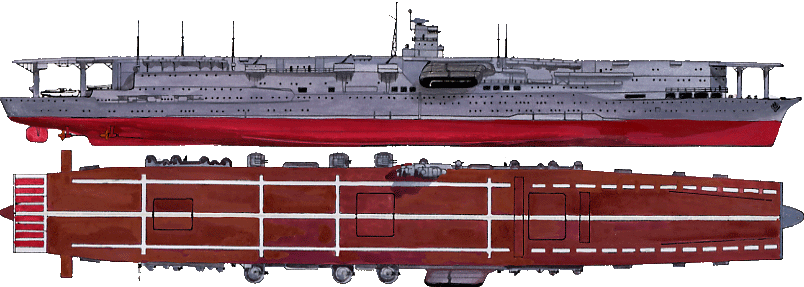
Author’s illustration of the Akagi after reconstruction in 1941
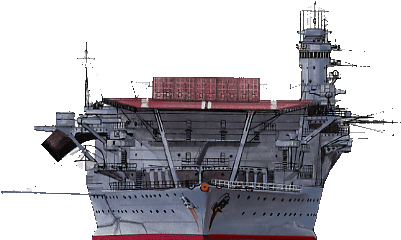
Akagi’s prow, author’s illustration
Specifications (1938)
Displacement: 36,500 long tons standard, 41,300 long tons Fully Loaded
Dimensions: 260.67 m (855 ft) x 31.32 m (103 ft) x 8.71 m (28 ft)
Machines: 4 shaft Gihon geared steam turbines, 16 Kampon oil firing boilers, 133,000 shp
Maximum speed 31.5 knots (58.3 km/h; 36.2 mph)
Range: 10,000 nmi (19,000 km; 12,000 mi) at 16 knots
Armament: 6 x 200 mm, 6×2 x 120 mm DP (4.5 in), 2×7 × twin 25 mm (1 in) AA
Aviation: 66 aircraft + 25 dismounted (21 ft, 18 db, 27 tb)
Crew: 1,650
Read More/Src
Sites:
http://www.combinedfleet.com/Akagi.htm
https://www.carrierbuilders.net/element/element.php?id=909
https://en.wikipedia.org/wiki/Japanese_aircraft_carrier_Akagi
http://navgunschl.sakura.ne.jp/koudou/ijn/buki/ammo/proj/3shiki.html
https://www.militaryfactory.com/ships/detail.asp?ship_id=ijn-akagi-aircraft-carrier
Hiraga Archives 1 2
http://www.navweaps.com/Weapons/WNJAP_161-45_3ns.php
http://wp.scn.ru/en/ww15/b/1013/65/0
https://www.secretprojects.co.uk/threads/japanese-carrier-torpedo-bombers.13575/
Books
Conway’s all the worlds fighting ships 1922-1947
EN: Gakken Publishing, 2011, Rekishi-Gunzo series, Origin of Imperial Navy: 8-8 Fleet Project” Gakken
Okumoto Go, 2011, “Drawings Capital Vessels of Eight-Eight Fleet” Kojinsha
Makino Shigeru and Fukui Shizuo, 1987, “Navy Shipbuilding Technology Overview” Kon’nichinowadaisha
Brown, David (1977). Aircraft Carriers. New York: Arco Publishing Company.
Campbell, John (1985). Naval Weapons of World War Two. Annapolis, Maryland: Naval Institute Press
Cheung, Raymond; Davey, Chris (2015). Aces of the Republic of China Air Force. Aircraft of the Aces. 126. Oxford, UK: Osprey Publishing.
Cressman, Robert J.; Steve Ewing; Barrett Tillman; Mark Horan; Clark G. Reynolds; Stan Cohen (1990). A Glorious Page in our History: The Battle of Midway 4–6 June 1942. Missoula, Montana: Pictorial Histories Publishing Company, Inc.
Evans, David C. (Editor); Mitsuo Fuchida (1986). The Japanese Navy in World War II: In the Words of Former Japanese Naval Officers (2nd ed.). Annapolis, Maryland: Naval Institute Press.
Fuchida, Mitsuo; Masatake Okumiya (1955). Midway: The Battle That Doomed Japan, The Japanese Navy’s Story. Annapolis, Maryland: United States Naval Institute.
Gardiner, Robert; Gray, Randal, eds. (1985). Conway’s All the World’s Fighting Ships: 1906–1921. Annapolis, Maryland: Naval Institute Press.
Gill, G. Hermon (1957). Volume I – Royal Australian Navy, 1939–1942. Australia in the War of 1939–1945, Series 2: Navy (1st ed.). Canberra: Australian War Memorial.
Goldstein, Donald M.; Dillon, Katherine V., eds. (2004). The Pacific War Papers: Japanese Documents of World War II. Dulles, Virginia: Potomac Books.
Hata, Ikuhiko; Izawa, Yasuho (1989) [1975]. Japanese Naval Aces and Fighter Units in World War II. Translated by Don Cyril Gorham. Annapolis, Maryland: Naval Institute Press.
Howarth, Stephen (1983). The Fighting Ships of the Rising Sun: The Drama of the Imperial Japanese Navy 1895–1945. Fairfield, Pennsylvania: Fairfield Graphics.
Ireland, Bernard (2007). Aircraft Carriers of the World. London: Southwater.
Jentschura, Hansgeorg; Jung, Dieter; Mickel, Peter (1977). Warships of the Imperial Japanese Navy, 1869–1945. Annapolis, Maryland: United States Naval Institute.X.
Lengerer, Hans (1982). “Akagi & Kaga”. In Roberts, John (ed.). Warship VI. London: Conway Maritime Press.
Lundstrom, John B. (2005). The First Team: Pacific Naval Air Combat from Pearl Harbor to Midway (New ed.). Annapolis, Maryland: Naval Institute Press.
Parshall, Jonathan; Tully, Anthony (2005). Shattered Sword: The Untold Story of the Battle of Midway. Dulles, Virginia: Potomac Books.
Peattie, Mark (2001). Sunburst: The Rise of Japanese Naval Air Power 1909–1941. Annapolis, Maryland: Naval Institute Press.
Sakaida, Henry (2002). Aces of the Rising Sun, 1937–1945. Oxford: Osprey Publishing.
Stille, Mark (2007). USN Carriers vs IJN Carriers: The Pacific 1942. Oxford: Osprey Publishing.
Toland, John (2003) [1970]. The Rising Sun: The Decline and Fall of the Japanese Empire, 1936–1945. New York: The Modern Library.
Tully, Anthony P. (2000). “IJN Kaga: Tabular Record of Movement”. Kido Butai. Combinedfleet.com.
Nauticos LLC (1999). “IJN Carrier Wreckage- Identification Analysis”. nauticos.com.
Werneth, Ron (2008). Beyond Pearl Harbor: The Untold Stories of Japan’s Naval Airmen. Atglen, Pennsylvania: Schiffer Military History.
Willmott, H. P. (1983). The Barrier and the Javelin: Japanese and Allied Pacific Strategies, February to June 1942.
Zimm, Alan D. (2011). Attack on Pearl Harbor: Strategy, Combat, Myths, Deceptions. Havertown, Pennsylvania: Casemate Publishers.
Worth, Richard. (2010). “Question 13/46: Catapults on WW II Japanese Aircraft Carriers”. Warship International.
The IJN AKagi in action
Flagship, First Carrier Division (Rengo Kantai)
The brand new Imperial Japanese aircraft carrier Akagi (赤城, “Red Castle”, named after Mount Akagi) made her sea trials in June, beating her own record on 17 June 1927 by achieving a speed record of 32.5-knots. She was commissioned in July, commanded by Captain Kaizu. She joined the Combined Fleet in August 1927, assigned later on 1st April 1928 to the First Carrier Division (Rengo Kantai) as it was created, under command of Captain (later Vice Admiral) Kobayashi Seizaburo which took office on 1 December 1927. This unit was also composed of the light carrier HOSHO and DesDiv 6’s UME and KUSUNOKI. Her air group by then consisted of 12 Mitsubishi Type 10 1MF3 fighters and four spares, 24 Mitsubishi Type 13 B1M attack planes (4 spares) and 12 Mitsubishi Type 10 2MR reconnaissance aircraft. She became the division’s flagship, carrying the mark of Rear Admiral Sankichi Takahashi. Her first year was spent in intensive training exercises. On 1st November 1927 she was reduced to reserve-class status for maintenance and overhault at the Yokosuka Naval Yard.
In April-June 1928 she Participated in large maneuvers at sea during, CarDiv 1 being the defense force (“blue force”) facing “red force”. On 10 December 1928 CarDiv 1 is disbanded and IJN Akagi again is replaced in reserve for maintenance, while the same day, and until 1 November 1929, her captain was no other than Isoroku Yamamoto, the future commander of the Combined Fleet. The carrier spent 1930 and 1931 without much noticeable events but more training. On 20 April 1929 there was a severe gale, and her air group was forced to land at airfields near Saishutoshima while maneuvers were aborted. On 22 April 1929 she was in Sasebo for resupply and short maintenance, and on 1st November 1929 she is visited by her new Captain (later Rear Admiral) Kitagawa Kiyoshi, replacing Yamamoto. In 26 October 1930 Kitagawa is relieved by Captain Hara Goro, himself replaced on 1st December 1930 by Captain Wada Hideo, formerly the CO of IJN Hosho. Nothning notable but on 18 August 1931 she had her deck damaged by a crash-landing airplane, and Captain Wada is injured as well as several sailors. On 28 August 1931 Captain Onishi Jiro takes command.
Early Carrier doctrine (CarDiv 1 & 2)
Akagi is in second-class reserve status on 1 December 1931 for a short refit. Her arresting gear was replaced, her radio and ventilation systems were both overhauled and improved. She was versed to first-class reserve status in December 1932 and returned in active service from April 1933, affected to the Second Carrier Division (CarDiv 2). She participates in the Special Fleet Maneuvers, still perfecting the carrier doctrine at large. On 25 April 1933 with CarDiv 1 she operated with DesDiv’s 2 four Minekaze class destroyers, and on 20 October 1933 Captain Tsukahara Nishizō takes command. On 15 October 1934 arrives at Osaka Wan Bay for exercises and on 1st November 1934 Captain Horie Rokuro became her new Commanding Officer. On 15 November she is attached to Rear Admiral Katagiri Eikichi’s newly formed CarDiv 2, as flagship, with her own familiar escort, DesDiv’s 2 Minekaze group.
Akagi and other carriers at first acted as tactical force multipliers, basically supporting the battleships, framed in the still favoured “decisive battle” doctrine. Akagi’s air group was supposed to attack enemy battleships. This was not before 1932-1933 that war games reveals that Aerial strikes against enemy carriers was of equal importance to establish air superiority during the initial stages of battle. For this, the “first strike” is emphasis, with a massive preemptive aerial attack. This is soon translated into real life fleet training exercises. Carriers operate together in front of the main battle line, or integrated into it. That new strategy relied on all carriers to evolve at high speeed with the rest of the fleet. It soon showed also larger aircraft with greater range are needed and therefore, longer flight decks and more spacious hangars. Therefore, the admirakty felt it’s time to carry out transformation to better suit this doctrine and correct several issues. On 15 November 1935, IJN Akagi joins the third-class reserve for an extensive modernization at Sasebo Naval Arsenal (see the details above). During that time she had two new captains: On 1st December 1936 Captain Terada Kokichi and on 27 August 1937 Captain Moizumi Shinichi, releived in December by Captain Mizuno Junichi, confirmed as she resumed service. Her new air group by then comprises 12 Mitsubishi A5M Type 96 “Claude” fighters (4 spares), 19 Aichi D1A “Susie” dive bombers (same) and 35 Yokosuka B4Y “Jean” torpedo bombers (16 spares). Notice this shows now the emphasis on antiship attack and no longer reconnaissance. Indeed the defensive air group is rather limited, reflecting the need for a massive “first strike” on an enemy carrier group.
Post-reconstruction service (1938-41)
Back to the first Carrier Division
Akagi’s modernization was over on 31 August 1938, she had by then the status of first reserve ship on 15 November and trained extensively still under command of Junichi. In September-October 1938 she underwent a cycle of acceptance trials. From 15 November, Captain Teraoka Kinpei (formerly on SORYU) take command. In December, she joins Rear Admiral Hosogaya Boshiro’s CarDiv 1 as flasghip and sole carrier, protected by a new escort, DesDiv 29’s destroyers (Oite, Hayate, Asanagi, Yunagi). Due to the international situation, IJN Akagi is dispatched for the southern Chinese waters, departing on 30 January 1939. At midnight on 9 February, after escorting a convoy, Vice Admiral Kondo Nobutake’s 5th Fleet, also called the “South China Naval Force” is formed, with CruDiv 9’s Myoko’s group with the light cruisers NATORI and NAGARA, DesDiv 23, 45 and 28 (Akagi’s escort) plus the Minesweeper Division 12. They entered Tsinghai Bay on the northern shore of Hainan Island to cover the main amphibious assault landing. Outside Akagi, which provides the bulk of the cover, she is assisted by the seaplane carrier IJN Chiyoda.
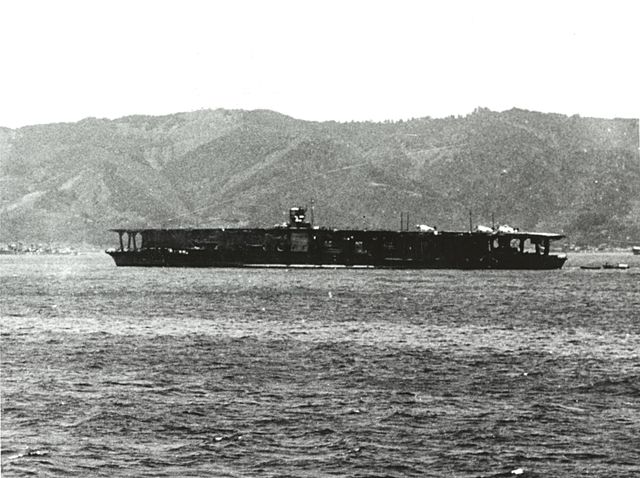
Akagi in Sukumo Bay, southern Shikoku (Japan), on 27 April 1939
Operations in China
She participates there in ground operations with close aerial support, notably over Guilin and Liuzhou. These operations are going on until 19 February, until she heads back home for resupply and a short maintenance in Sukumo Bay. In November 1939 she is back, taking part in operations over Samah and Hainan Island, covering the Pakhoi and Nanning invasion transports (from Samah Bay). The group consists of the transports Taito (4,466 grt), Taian (3,670 grt), Isshin (4,955 grt), Tomiura (3,821 grt), Tateishi (3,800 grt), Fukuyo (5,463 grt), and Yuki Maru (3,170 grt), still under command of Vice Admiral Nobutake 5th Fleet covered by DesDiv 11. The transports lands elements of Lt. Gen. Ando Rikichi’s 21st Army and its 5th Division, 21st Brigade among others. Akagi provided the air cover during the invasion with Chiyoda, assisted by the tender Kamikawa Maru and CarDiv 2 (HIRYU and SORYU). On the 15 takes place a surprise landing on the coast of Guangxi (Yuhung River) and Pakhoi, Lungmen Island, plus the eastern shore of Yamchow Bay and another special force lands at Qinzhouwan Bay, near Qusha of Pakhoi city. Resistance is limited. On 24 November, Nanning falls to the Japanese.

IJN Kirishima and Akagi in the background
IJN Akagi from December 1939 to March 1940 remains in home waters, stationed in Ariake Wan (Bay), in Kyushu, for training after maintenance and supplies. Her air group is partially replaced and rejuvenated, with 18 A5M (6 spares), 27 B5N (9 spares), 18 D1A2 (6 spares). She is back in March 1940, this time to support operations in central China. This lasts from 27 March until 2 April 1940. She departs China for Japan on the 2, is maintained and resupplies, her crew had a leave, and on 1st June 1940 departs Yokosuka for Ariake Bay, for training. In June she is in Beppu Bay and is back on July 1940 to Yokosuka, then returns on 10 August 1940 at Ariake Bay and by September 1940 is back in Yokosuka. On 5 September she departs to the southern Pacific, to support Army’s operations. She is back home on 18 September, Hiroshima Bay and twi days later Arrives at Kure. On 11 October 1940 she participates in the Naval Review off Yokohoma, and returns to Yokosuka. The same month, Captain Ito Ko taks command. On 15 November 1940, she becomes a “special purpose ship (Tokubetse Ilomokan)” and enters the drydock for an overhaul, and several inspections of her armament, radio instrumentation and fire-control systems are conducted, fixes are made. She is back in training by March 1941, under command of Hasegawa Kiichi. IJN Akagi later was designated as the First Air Fleet flagship, an honor and a role she retained until she was sunk at Midway. She basically led the Kido Butai until its downfall and difficult reconstitution.
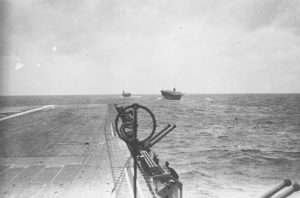
IJN Akagi, Kaga and Zuikaku at sea
Lessons of China: Creation of the Kido Butai
Experiences off China helped to further develop the the Japanese carrier doctrine. Events had shown the importance of concentration, mass projection and combined arms. By April 1941, the First Air Fleet, better known as “Kido Butai” is formed. It combined all fleet carriers under a single command. That’s a world’s first and this famous strike force would be the centerpiece of Japanese Operations until 1942. On 10 April, IJN Akagi and Kaga are assigned to the First Carrier Division of the Kido Butai. The Second one comprised the Hiryū and Sōryū, and the fifth one Shōkaku and Zuikaku, the best and largest fleet carriers of the IJN. The doctrine on air strikes combining all air groups taks the best of the year 1941. The difficulty is coordinating all the carrier divisions in operations, wrting the book as it went. This massed carrier-based air attack group was a quite unique instrument that no other fleet at the time and gave the IJN a decisive advantage, although the top brass still insisted to maintain that concentrating all these carriers together made them vulnerable.
Soon a compromise solution was found, by combining the fleet carriers in loose rectangular formations with approximately 7,000 meters (7,700 yd) separating each carrier. Furthermore, rather than a single massed attack, each carrier had to launch a “deckload strike” that could be spotted at one time on each flight deck, rather than waiting for the hangars to be emptied. The principle was now successive waves as the first was followed by the next deckload of aircraft, all prepared in the hangars. The IJN command doctrine therefore estimates at least two massed waves in any attack. The First Air Fleet was also still not the Japanese Imperial fleet main strategic striking force due to much resistance from traditionalists inside the navy. It was an integral component of the Combined Fleet’s Kantai Kessen, the “decisive battle” task force, always centered on battleships, a Mahanian concept embraces at the time by all admiralties.
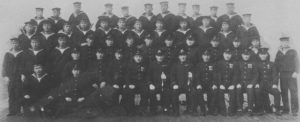
Air mechanics of Akagi posing in 1941
The First Air Fleet neverthelss had defensive deficiencies. For Mark Peattie, it had a “glass jaw”, as it was geared for offensive by ill-prepared for a massive counterstrike.
-The anti-aircraft guns and associated fire-control systems notably had issues.
-The constitution of the fleet combat air patrol called for too few fighters to stay close to the carriers after the waves departed.
-There was an inadequate early warning system, of which the radar was of course a crucial asset to possess.
-Poor radio communications ensured bad coordination with fighters, and this inhibited effective command of these patrols.
-Last but not least, escorting ships were not trained, nor deployed for close anti-aircraft support (in addition to their poor AA and FCS).
This all showed up at Midway in particular and combined to doom the First Air Fleet carriers.
Last prewar operations (March-November 1941)
On 10 April 1941, Akagi is now officially the flagship of the newly organized First Air Fleet, still also flagship, Cardiv 1, teaming with IJN Kaga and escorted by DesDiv 7 (Destroyers AKEBONO and USHIO). The Kido Bitai also comprised the second carrier disvision (HIRYU, SORYU) escorted by DesDiv 23, and the fourth (RYUJO). The following day, Vice Admiral Chuichi Nagumo (former CO of IJN YAMASHIRO) takes command of AKAGI and Commander in Chief of the Kido Butai. Contrary to Yamamoto, he is part of the “battleships first” faction in the Navy. The fleet departs Yokosuka on 22 April 1941 and arrived two days later at Kagoshima Bay. In late April-May 1941 it was in exercises off Kyushu, still based in Ariake Bay. These were intensive, also coordinating horizontal bombing and target ship practice, notably against IJN SETTSU. IJN Akagi new air group saw her dive bombers replaced by 18 Airchi D3A (and 3 spares). On 22 May 1941 her unit is back at Sasebo and the carrier entered drydock for hull maintenance and some repairs. This is over on 5 June 1941 and she departs for Kushikino (western Kyushu). There, and until July, in an area stretching until Okinawa she conducts training exercises, notably perfecting torpedo-bombing and fighter’s close protection.
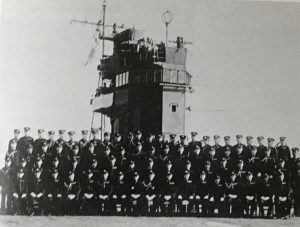
Officer’s reunion, posing in front of Akagi’s bridge in December 1941
One exercise shows the reds (CarDiv 1) attacking CarDiv 2 (blue) and later vice-versa. On 15 July 1941 She was back in Yokosuka for maintenance and repairs and at sea again on 29 July, again for training in Ariake Bay and Kagoshima. On 25 August she is back at Yokosuka while Fuchida Mitsuo is appointed the new commander of air group. She received her provision of brand new fighters, 18 Type 0 Mitsubishi A6M2 Reisen “Zeke”. The rest of her air group did not changed. Two days after, she is back at Yokosuka for maintenance, and at sea on 16 September 1941, heading for Ariake Wan, Yokosuka again in october to dockyard, to repair minor damage. This is over on 23 October and on the 27 she is back to Ariake Bay, cruising to Kagoshima Bay and departing on november 1941 Ariake Bay. On 4 November she took part in two major training air raids, conducted against Saeki base (an obvious reharseal for pearl Harbor), her air group taking off from 200 nautical miles.
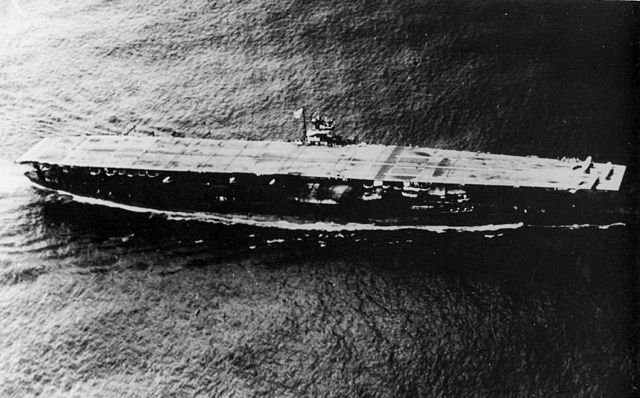
IJN Akagi in the summer of 1941
Admiral Yamamoto, by then was the Combined Fleet’s CINC and held a conference aboard Akagi with the Kido Butai’s entire staff, setting up grand operation planning. The date for the start of offensive operations against the USA was fixed on 8 December (Tokyo time), and confirmed while discussions about recent training lessons led to modifiy the torpdoes, apparently running too deep after being dropped. This is of course detrimental for the shallow waters of Pearl Harbor. The implementation of lighter wooden fins is found to fix the problem and is quickly implemented onboard all carriers. On 7 November 1941, IJN Akagi is back at Kagoshima Bay, departs the following day for Sasebo and again the 13 to Kagoshima, sailing out two days later. On 16 November 1941 at 13:40 she arrives at Saeki Bay. and at 15:00, Admiral Yamamoto and staff made a full staff officer briefing on the flight deck of Akagi, attended by all officers which would took part in the the subsequent Operation. To keep the utmost secrecy, crews rare forbidden to get ashore. Just after sunset, the Kido Butai departs Saeki Bay for the Kuriles. In preparation, the fleet was anchored at Ariake Bay in Kyushu (the southermost island) in September while the air groups trained for a Kagoshima base, with all 1st Air Fleet air units. Special preparation had been made to represent at reduced scale Pearl Habor. Target practice was intensive, notably testing the new torpedoes.
Akagi in WW2
Operation Z, the Pearl harbor attack
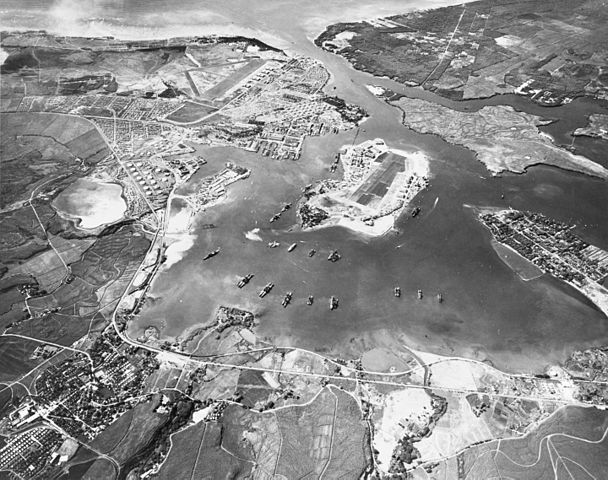
On 22 November 1941, the Kido Butai arrives at Hittokappu Bay, in Etorofu-To Island. This was the secret assembling point for the Pearl Harbor attack. At 20:00, Lt. Cdr. Fuchida and the Chief of Intelligence Suzuki, meet in the conference room of Akagi. He points out the particular targets on a diorama just made from local informants, depicting the Naval Base and the present status of warships in the harbor, number of aircraft visible on every airfield as well as AA defense posts around. At dawn, Vice Admiral Nagumo conducts a briefing for local carrier COs and escort warships, again to plan details for the Hawaii Operation. Indeed, radio silence would prevail until reaching the launching point for the attack. The only way to communicate from then on would be through visual signals by projectors in morse code, and dispatches thrown by planes on carrier decks for more detailed revisions. Lt. Cdr Minoru Genda also specified during this meeting particular targets, also referring a planned course of operation. On 25 November 1941 a ceremonial banquet was hosted by Fuchida, to the future victory with officers of the other warships, also in Akagi. After preparations and training were complete, IJN Akagi led the First Air Fleet at Hitokappu Bay, in the Kurile Islands on 26 November 1941.
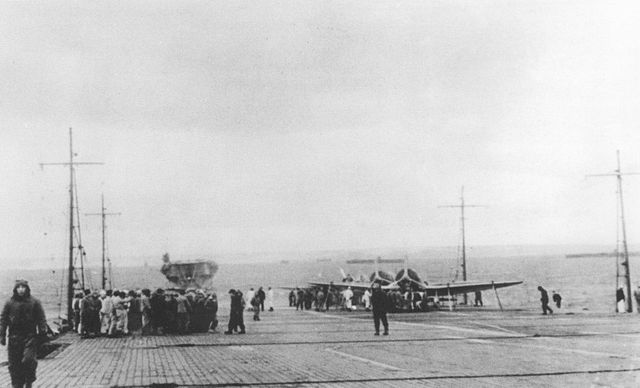
Crewmembers gather on the flight deck of Akagi at Hitokappu Bay, Kuriles in November 1941 prior to the attack on Pearl Harbor. The other carriers in the background are, from left to right: Kaga, Shōkaku, Zuikaku, Hiryū, and Sōryū.
Akagi’s captain for this operation was Kiichi Hasegawa. Akagi with the rest of the fleet made her long trip with the five carriers, in heavy weather, until gaining a position 230 nautical miles (430 km; 260 mi) north of Oahu, Hawaii. There, the operation started. All carriers prepared to launch the first two wave at dawn, on 7 December 1941. The first wave on Akago saw all 27 Nakajima B5N “Kate” torpedo bombers taking off, to later target the battleships USS Oklahoma, West Virginia and California. Nine Mitsubishi A6M Zeros which escorted them strafed Hickam Field. The second wave saw the 18 Aichi D3A “Val” dive bombers of Akagi taking off and later fell on USS Maryland and Pennsylvania, plus the light cruiser USS Raleigh and the destroyer USS Shaw, fleet oiler Neosho. Nine A6M attacked other airfields nearby, but on was shot down by AA guns during this second wave. Another spotted and attacked a Boeing B-17 Flying Fortress as it just landed at Hickam. By that time, IJN Akagi had only three fighters left remaining to her close protection patrol (CAP). She virtually had no planes left but thse dismounted, spares in the lower hangar. Needles to say, Pearl Habor was an outstanding success and an (infamous) landmark in world’s history. It also triggerred a change in the minds of the “battleship faction” of the IJN, which lost supporters after this superb demonstration.
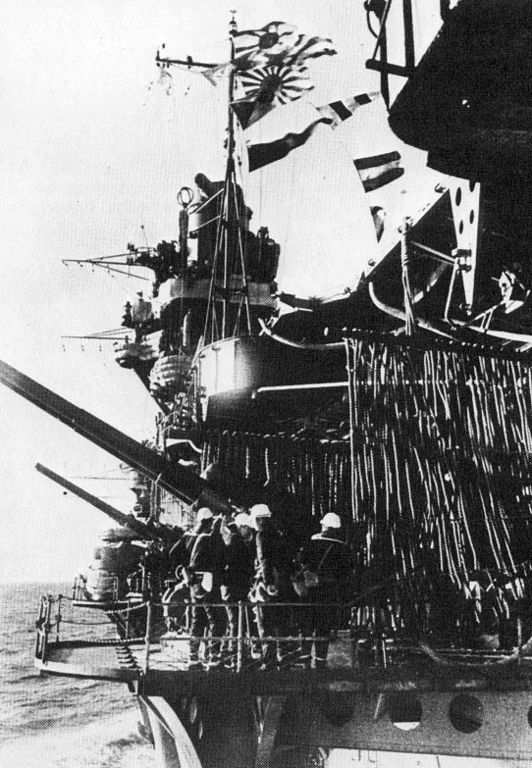
Akagi’s AA gun position, showing its restricted arc of fire
South Pacific Operations (January 1942)
From January 1942, The 1st and 5th Carrier Divisions supported the invasion of Rabaul, Bismarck Archipelago. The next phase of the IJN admiralty’s grand strategy was one it way, trying to secure a southern defensive perimeter to prevent an attack from Australia. Akagi committed 20 B5Ns and 9 Zeros for the first attack on Rabaul (20 January) and her Division attacked Kavieng the following day, with 9 A6M Zeros and 18 D3As “Val”. Two days later, Akagi had the same back on Rabaul before. Akagi sailed to Truk afterwards, on 27 January. Meanwhile, the second Carrier Division (Sōryū, Hiryū) were supported the invasion of Wake Island (from 23 December 1941). Only by February 1942 this unit joined the other two, partially reunifying the Kido Butai.
The raid on Darwin (19 February 1942)
IJN Akagi, Kaga and Zuikaku made a sortie to locate and attack the US force raiding the the Marshall Islands on 1st February but they were recalled. On 7 February, Both the first and Second Carrier Divisions sailed to the Timor Sea. On 19 February, they launched from 100 nautical miles (190 km; 120 mi) away, southeast of Timor, theur famous atttack on Darwin, the “Australian pearl harbor”. Ships were targeted, as well as harbor and airfield facilities. This was a preemptive attack in order to secure future operations to conquer Java. Akagi launched that day her 18 B5Ns, 18 D3As, and 9 Zeros. Surprise was total and eight ships were sunk (the USS Peary was one of them) and 14 damaged. There was no loss for the attackers. Darwin was from then on, pretty much written off from contributing any further to the Allied defense. On 1st March, the American oiler Pecos was spotted and sunk by D3As from Akagi and later the destroyer USS Edsall too (with planes from Sōryū) and Japanese warships gunfire.
Operations of Java
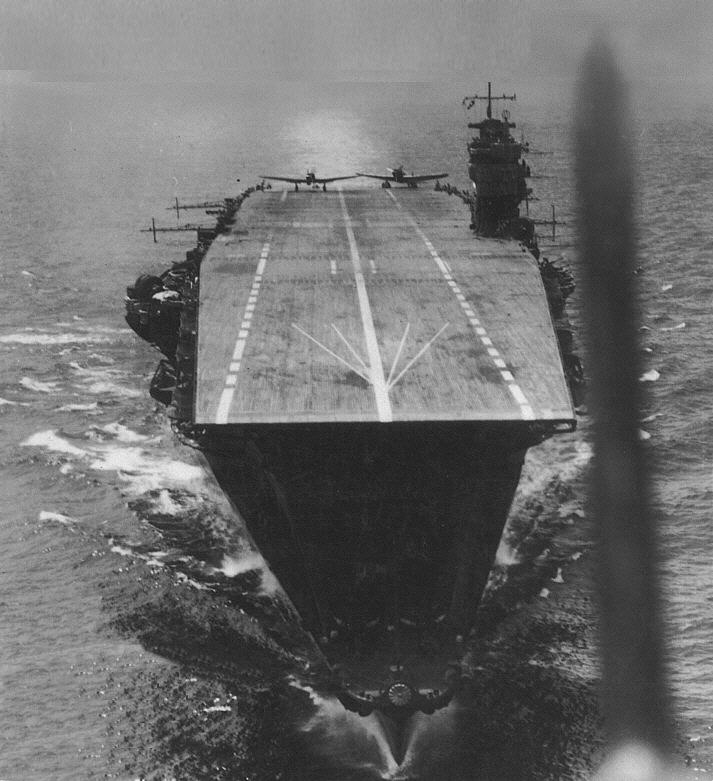
IJN Akagi in April 1942
IJN Akagi covered next as planned the invasion of Java, providing 18 B5Ns and 9 Zeros on the 5 March 1942 for air strike on Tjilatjap. They sank eight ships in the harbor for no loss. The Allied forces surrendered later in the whole Dutch East Indies at the end of March. The Kido Butai departed afterwards for Staring Bay, Celebes Island to refuel and resupply while crews had a rest.
Indian Ocean raid
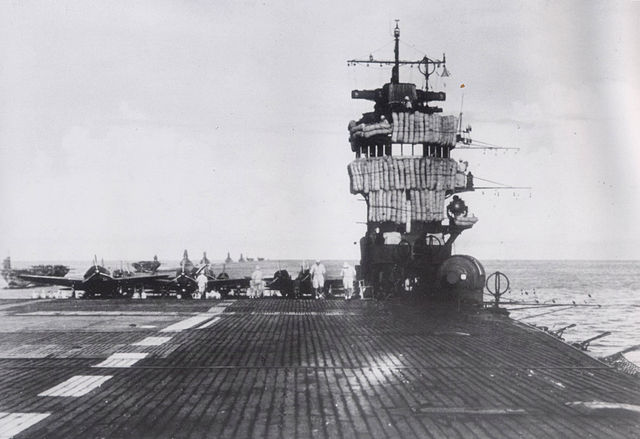
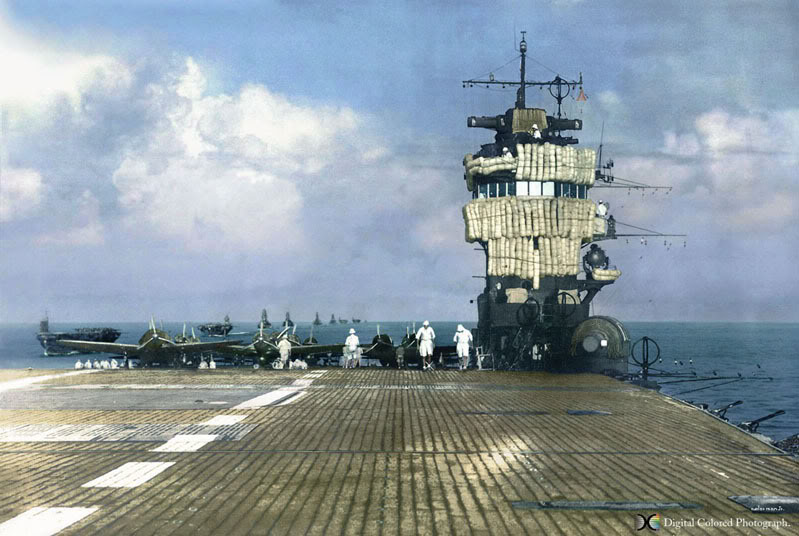
IJN Akagi’s deck during the Indian Ocean Raid (the second is colorized by Irootoko Jr).
IJN Akagi departed the Celebes Island to lead the 1st CarDiv for the attack on Colombo (Ceylon), on 26 March 1942, with the rest of the Kido Butai. The intent was to bleed white the British Eastern Fleet, sole remaining threat after the destruction of Force Z off Singapore, but also to destroy British airpower in the region. This was in order to secure the flanks of the Army-Navy operations in Burma. On 5 April 1942, IJN was in position of the attack, launching 17 B5Ns and 9 Zeros against Colombo. Few ships were destroyed by at least the port facilities suffered the most. No loss again, while Zero pilot claimed to have shot down at least a dozen Buffalo fighters defending the port.
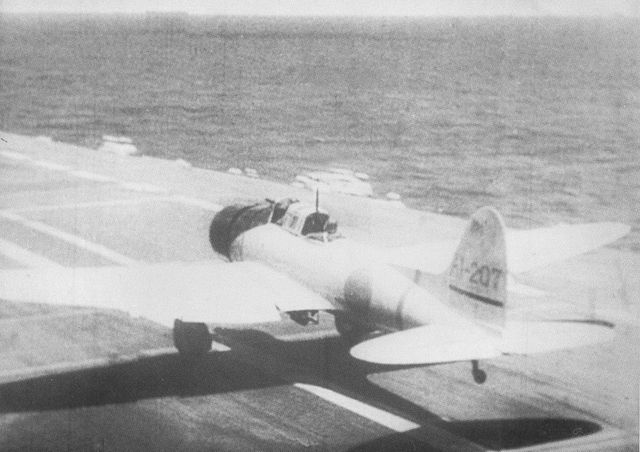
Aichi D3A taking off from Akagi
Later the same day, 17 D3As took off from IJN Akagi and hemped sinking the heavy cruisers HMS Cornwall and Dorsetshire, previously spotted by observation planes. This largely compensated by the meagre results in Colombo. On 9 April, Akago’s air group was unleashed on Trincomalee. 18 B5Ns escorted by 6 Zeros, which claimed 5 Hawker Hurricane (two confirmed). In between a spotter plane from Haruna identified the aircraft carrier HMS Hermes, escorted by the destroyer HMAS Vampire. Akagi launched all her available (17) D3A with more from Kaga and other CVs, and they helped to sink both vessels. Another crippling blow for the Royal Navy, confirmed by the destruction of the RFA oil tanker Athelstone escorted by the corvette HMS Hollyhock. However ths same day, the RAF had lauch nine British Bristol Blenheim bombers , which took off from Ceylon, penetrated the weak fighter protection of Akagi and dropped their bombs on the carrier from 11,000 feet (3,400 m). This proved a mistake as they missed both Akagi and her escorting cruiser, IJN Tone, for four Blenheims shot down by CAP fighters. Another was later shot down by the fighters returning from the air strike on Hermes. Jugding these results quite honorable, and lacking targets of opportunity, low on fuel and ammo, the fleet headed back home.
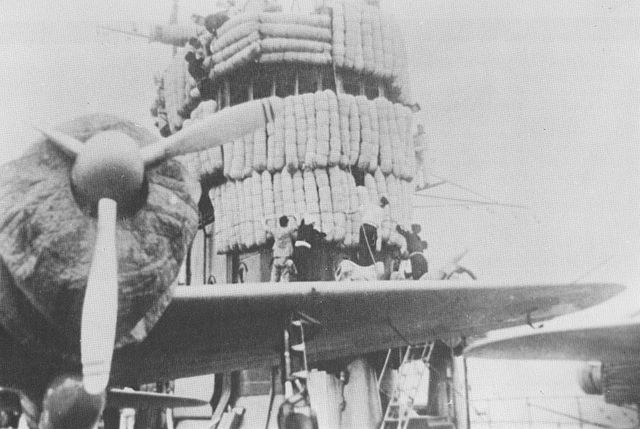
Installation of mattresses on Akagi’s bridge
Back to home waters
On 19 April 1942, Akagi was sent off Taiwan, during the transit to Japan with Sōryū and Hiryū in pursuit of the USS Hornet and Enterprise after the Doolittle Raid. But the latter were back to Hawaii already and Akagi abandoned the chase to sail to Hashirajima, arriving on 22 April. Three days later Captain Taijiro Aoki took command. In constant operations for 4.5 month, the ship needed a well deserved drydock maintenance, as the other three carriers of the 2 Carrier Divisions. But she was replenished in haste, in preparation for the next Combined Fleet operation, for which the Fifth Carrier Division (Shōkaku, Zuikaku) was detached in mid-April rather than joining the rest of the Kido Butai. They were committed in Operation Mo, the capture of Port Moresby to threaten Australia, in new Guinea. This resulted in the Battle of the Coral Sea, in which both carriers suffered many losses in their air group, but ensured a pyrrhic victory, leading to a strategic defeat (Operation Mo was cancelled). Akagi air group meanwhile trained ashore in Kagoshima during her maintenance, conducting flight and weapons training combined with other air groups, perparing for the next big operation.
Battle of Midway
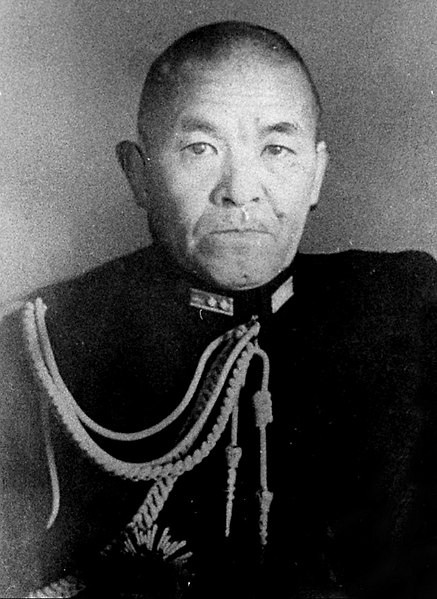
Vice Admiral Chūichi Nagumo, onboard Akagi as his and the Kido Butai’s flagship from Pearl Harbor to Midway
After the US carrier strikes of the Marshall Islands and Doolittle raids, Yamamoto wanted to commit them into a final showdown, eliminating this last force for good. To draw them into combat, he needed a substantial bait, the US could not afford to loose. Yamamoto decided the best course of action was to invade and occupy Midway Island, on the way to Hawaii. He was sure this would draw out remaining USN carrier forces. The codename for this was “Operation MI”. On 25 May 1942, IJN Akagi joined Combined Fleet’s carrier force (Kaga, Hiryū, Sōryū, 1st and 2nd CarDiv) for the attack on Midway, Nagumo as customary directing operation from Akagi. After the losses suffered at the Coral Sea, the 5th Carrier Division (Shōkaku, Zuikaku) had little pilots left and did not participated. Akagi air group at that time had more fighters, no less than 24 Zeros, and 18 D3As, 18 B5Ns for attack. This was her last air group. Her pilots were veterans, highly experienced, like those of Kaga and the two other carriers, which did not participated in the battle of the Coral sea.
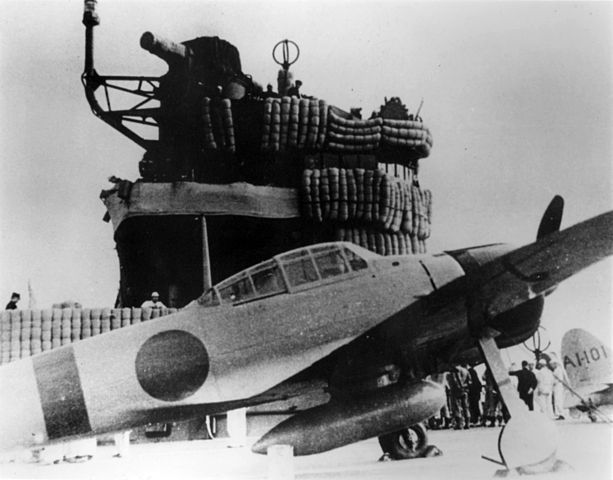
A6M Zero fighter in front of IJN Akagi’s bridge, protected from shrapnels by sandbags. They were successful that fateful day, downing most of the attackers but were not at the right place when the last wave of dive bombers came.
Yamamoto positioned his fleet 250 nautical miles (460 km) northwest of Midway Island, arriving at dawn, 04:45 local time, on 4 June 1942. The Kido Butai combined 108 planes made ready for a first strike on the airfield on Eastern Island. Akagi contributed 18 dive bombers, escorted by nine Zeros. Her B5Ns waited, armed with torpedoes, ready to intervene when the US carrier force was spotted. Over Midway, only one Zero was lost, shot down by AA, while three were damaged when strafing, as well as four dive bombers by shrapnell from 3-in AA guns. One landed but could not be repaired. Meanhile, US Intelligence, which knew about the Japanese moves, led an ambush, committing indeed its last three available carriers. They took position northeast of Midway.
One Akagi’s torpedo bomber soon joined the ongoing search for the US ships in the area, including three Zeros, on the 11 assigned to the initial combat air patrol at a shorter range. At 07:00, these 11 fighters were helping to defend the Kido Butai as the first US wave from Midway, arrived at 07:10: Six US Navy Grumman TBF Avengers from VT-8, and four USAAF B-26 Marauders carrying torpedoes. The Avengers targeted Hiryū wthout success, the Marauders concentrating on Akagi. The Kido Butai combined 30 Zeros for the area defense, and they were all ready, shooting down five of the Avengers, two B-26s while one Akagi’s Zero was shot down by defensive fire from B-26s. None of the Marauders’s torpedoes did damage, all missed or were duds, but one B-26 (Lt. James Muri) strafed Akagi and killed two men and another, badly damaged by AA fire headed for Akagi’s bridge, narrowly missing. Nagumo and hos staff were speechless at what they saw in disbelief as an attempted suicide ramming. This would have killed instantly, if successful, the Ci-in-C and his command staff and shook Nagumo enough to order another attack on Midway, which in direct violation of Yamamoto’s order to keep a reserve strike force to deal with the carriers.
At 07:15 based on this controversial decision, Nagumo ordered not only his B5Ns, but those on Kaga to be rearmed with bombs instead of torpedoes, for the second wave on Midway. This critical decision basically doomed the entire strike force. The process was long, taking place in the hangar. It was also limited by the number of ordnance carts used to handle the payload as well as ordnance elevators. These bombs needed to be moved up from their magazine, assembled, and mounted on and this took normally 1h30 plus the time to lift the aircraft onto the flight deck one by one, warm up their engines, then launch them them in turn. All in all, two hours of busy operations. But at 07:40, Nagumo learned the US fleet was reported, and hurridly reversed his order. Soon, three of her patrolling Zeroes were back onboard to resupply at 07:36.
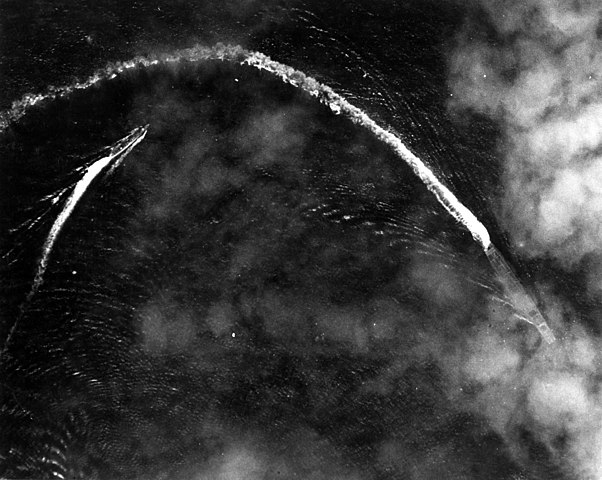
Akagi taking evasive action during a B-17 attack after 08:00, 4 June 1942 with probably the destroyer IJN Nowaki trailing behind. Took by one B-17 crewman.
At 07:55, there was a second strike from Midway, 16 SBD-2 Dauntless (VMSB-241, Major Lofton R. Henderson). Akagi still had three CAP fighters on nine patrolling, and they shoot down six of the attackers, attempting a glide bombing attack on Hiryū (which failed). But soon after, a wave of 12 USAAF B-17 Flying Fortresses from Midway were spotted at 20,000 feet (6,100 m). This distance gave enough time to the carrier’s captain to anticipate the bombs path and maneuvered their ships away. Four B-17s targeted Akagi and missed. Soon afterwards, three Zeros took off from her flight deck, at 08:08 and four more at 08:32. They would help defeat the last wave from Midway, 11 Vought SB2U Vindicators (VMSB-241) first targeting IJN Haruna at 08:30. Three were shot down, Haruna maneuvered and dodged the rest. All these attacks left Nagumo off-balance while operations or rearmament went on feverishly in the hangars. At 08:20 he had another report of the American carrier forces to his northeast.
IJN Akagi then started to recover her first wave on Midway at 08:37, and operations went on until 09:00. These planed were quickly struck below as soon as they arrived to clear the flight deck to launch the B5Ns as soon as possible. These preparations were interrupted at 09:18 as the first US carrier wave was sighted, 15 Douglas TBD Devastator torpedo bombers (VT-8, John C. Waldron), from USS Hornet. Six Akagi’s CAP Zeroes and the other 15 of the defensive perimeter soon closed in and short down all 15 as they started their torpedo attack, first on Soryū. One surviving pilot was later captured. Making a low approach, these slow targets were easy meat.
Then 14 Devastators (VT-6, USS Enterprise, Eugene E. Lindsey) arrived, and concentrated on IJN Kaga. But again, the CAP zeros, soon joined by eight more from Akagi back from midway and resupplied, launched at 09:33 and 09:40 combined and shot down all but four of them. Kaga dodged these attacks, but one gunner of a Devastator claimed a Zero.
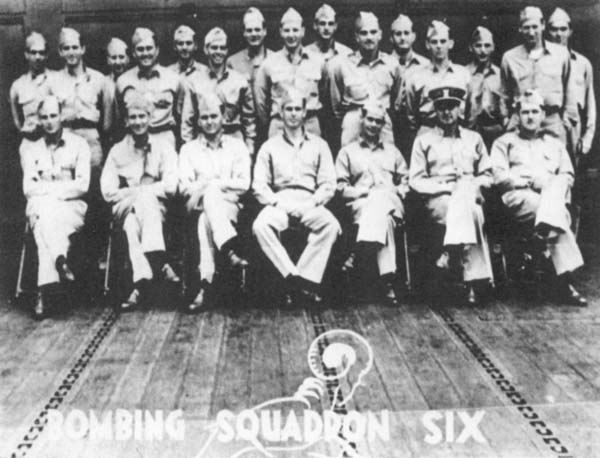
The USN decisive Dauntless wave at Midway: The dive bomber pilots of VB-6 (USS Enterprise) which doomed IJN Akagi. Richard “dick” Best is center, front row. The other two were Edwin J. Kroeger and Frederick T. Weber.
A few time after this torpedo attack, dive bombers regrouped and arrived over the Japanese carriers and started their dives. Zeros were away, as well as the attention of AA gunners and lookouts. This critical even started at around 10:20. In total, 28 dive bombers from USS Enterprise (C. Wade McClusky) targeted first Kaga, hit by four bombs but due to miscommunication, some McClusky’s elements (VB-6) led by Richard Best renounced to attack Kaga, broke off and dove on Akagi instead. At around 10:26, three bombs fell, but two narrowly missed. The first landed very close to the island, (16–33 ft) to port, the third missed the flight deck close to the stern. But Dick Best’s 1000 pounds bom landed at the aft edge of the middle elevator. It detonated in the upper hangar, fill with aviation gasoline vapors and live ammunition. A serie of explosions soon detonated all B5N torpedo bombers present and started an uncontrollable fire.
At 10:29, Captain Aoki ordered the magazines flooded to avoid a castrastrophic explosion, but it only worked for the forward magazines. The aft ones suffered from a valve damage while the ship’s main water pump was found out of order. Therefore all efforts to contain the fire were doomed. At around 10:32 damage control teams desperately used the one-shot CO2 fire-suppression system but burning aviation fuel made it advance deeper into the ship, leading to more damage. At 10:40 it was found also that the near-miss aft had the rudder jammed 30 degrees to starboard, as Akagi was making an evasive maneuver. Soon, Akago’s flight deck erupted in flames in turn while heat and smoke invaded the bridge. At 10:46, Admiral Nagumo transferred his flag to IJN Nagara and evacuated with his staff, while the aircraft carrier was now stopped dead in the water. At 13:50 eacuation was ordered, except for Captain Taijiro Aoki and damage-control personnel, which fought on the fire for the next hours, but failed. All were evacuated later that night as the ship was still burning.
At 04:50, 5 June, Admiral Yamamoto receved the news and ordered IJN Akagi to be scuttled, which was done by torpedo volleys from IJN Arashi, Hagikaze, Maikaze, and Nowaki. Akagi sank, bow first, at 05:20, to a reported position. In all, the carrier lost 237 men, comparatively less than the other carriers. Most had been killed on the second bomb explosion and Hangar fire. The loss at Midway, the 2/3 of Japan’s fleet carrier force and the core of the kido Butai, including many of the pilots of the First Air Fleet is still celebrated today in the west as the turning point of the Pacific (with Guadalcanal but on the long run). It was a crippling strategic defeat for Japan. Never again its fleet carrier force could be reconstructed with such quality in training. The defeat was concealed and at home, Alagi was still listed in the registry, only struck on 25 September 1942 while surviving crews were spread withing combating forces and not granted a leave home.
On 20 October 2019, the wreck was surveyed by the Vulcan Inc. Director of Undersea Operations Rob Kraft, and the Naval History and Heritage Command (historian Frank Thompson) on RV Petrel. They located it, based on the reported position in WW2, 1,300 miles north west of Pearl Harbor under 18,011 feet (5,490 m) of water, upright on her keel and largely intact.

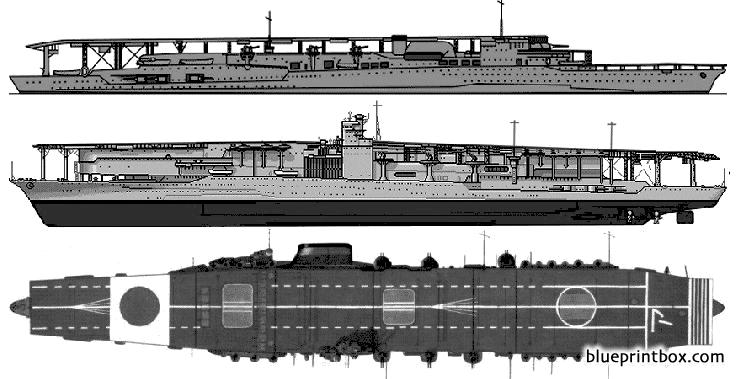
 Latest Facebook Entry -
Latest Facebook Entry -  X(Tweeter) Naval Encyclopedia's deck archive
X(Tweeter) Naval Encyclopedia's deck archive Instagram (@navalencyc)
Instagram (@navalencyc)





 French Navy
French Navy Royal Navy
Royal Navy Russian Navy
Russian Navy Armada Espanola
Armada Espanola Austrian Navy
Austrian Navy K.u.K. Kriegsmarine
K.u.K. Kriegsmarine Dansk Marine
Dansk Marine Nautiko Hellenon
Nautiko Hellenon Koninklije Marine 1870
Koninklije Marine 1870 Marinha do Brasil
Marinha do Brasil Osmanlı Donanması
Osmanlı Donanması Marina Do Peru
Marina Do Peru Marinha do Portugal
Marinha do Portugal Regia Marina 1870
Regia Marina 1870 Nihhon Kaigun 1870
Nihhon Kaigun 1870 Preußische Marine 1870
Preußische Marine 1870 Russkiy Flot 1870
Russkiy Flot 1870 Svenska marinen
Svenska marinen Søværnet
Søværnet Union Navy
Union Navy Confederate Navy
Confederate Navy Armada de Argentina
Armada de Argentina Imperial Chinese Navy
Imperial Chinese Navy Marinha do Portugal
Marinha do Portugal Mexico
Mexico Kaiserliche Marine
Kaiserliche Marine 1898 US Navy
1898 US Navy Sovietskiy Flot
Sovietskiy Flot Royal Canadian Navy
Royal Canadian Navy Royal Australian Navy
Royal Australian Navy RNZN Fleet
RNZN Fleet Chinese Navy 1937
Chinese Navy 1937 Kriegsmarine
Kriegsmarine Chilean Navy
Chilean Navy Danish Navy
Danish Navy Finnish Navy
Finnish Navy Hellenic Navy
Hellenic Navy Polish Navy
Polish Navy Romanian Navy
Romanian Navy Turkish Navy
Turkish Navy Royal Yugoslav Navy
Royal Yugoslav Navy Royal Thai Navy
Royal Thai Navy Minor Navies
Minor Navies Albania
Albania Austria
Austria Belgium
Belgium Columbia
Columbia Costa Rica
Costa Rica Cuba
Cuba Czechoslovakia
Czechoslovakia Dominican Republic
Dominican Republic Haiti
Haiti Hungary
Hungary Honduras
Honduras Estonia
Estonia Iceland
Iceland Eire
Eire Equador
Equador Iran
Iran Iraq
Iraq Latvia
Latvia Liberia
Liberia Lithuania
Lithuania Mandchukuo
Mandchukuo Morocco
Morocco Nicaragua
Nicaragua Persia
Persia San Salvador
San Salvador Sarawak
Sarawak Uruguay
Uruguay Venezuela
Venezuela Zanzibar
Zanzibar Warsaw Pact Navies
Warsaw Pact Navies Bulgaria
Bulgaria Hungary
Hungary

 Bundesmarine
Bundesmarine Dutch Navy
Dutch Navy Hellenic Navy
Hellenic Navy Marina Militare
Marina Militare Yugoslav Navy
Yugoslav Navy Chinese Navy
Chinese Navy Indian Navy
Indian Navy Indonesian Navy
Indonesian Navy JMSDF
JMSDF North Korean Navy
North Korean Navy Pakistani Navy
Pakistani Navy Philippines Navy
Philippines Navy ROKN
ROKN Rep. of Singapore Navy
Rep. of Singapore Navy Taiwanese Navy
Taiwanese Navy IDF Navy
IDF Navy Saudi Navy
Saudi Navy Royal New Zealand Navy
Royal New Zealand Navy Egyptian Navy
Egyptian Navy South African Navy
South African Navy






























 Ukrainian Navy
Ukrainian Navy dbodesign
dbodesign